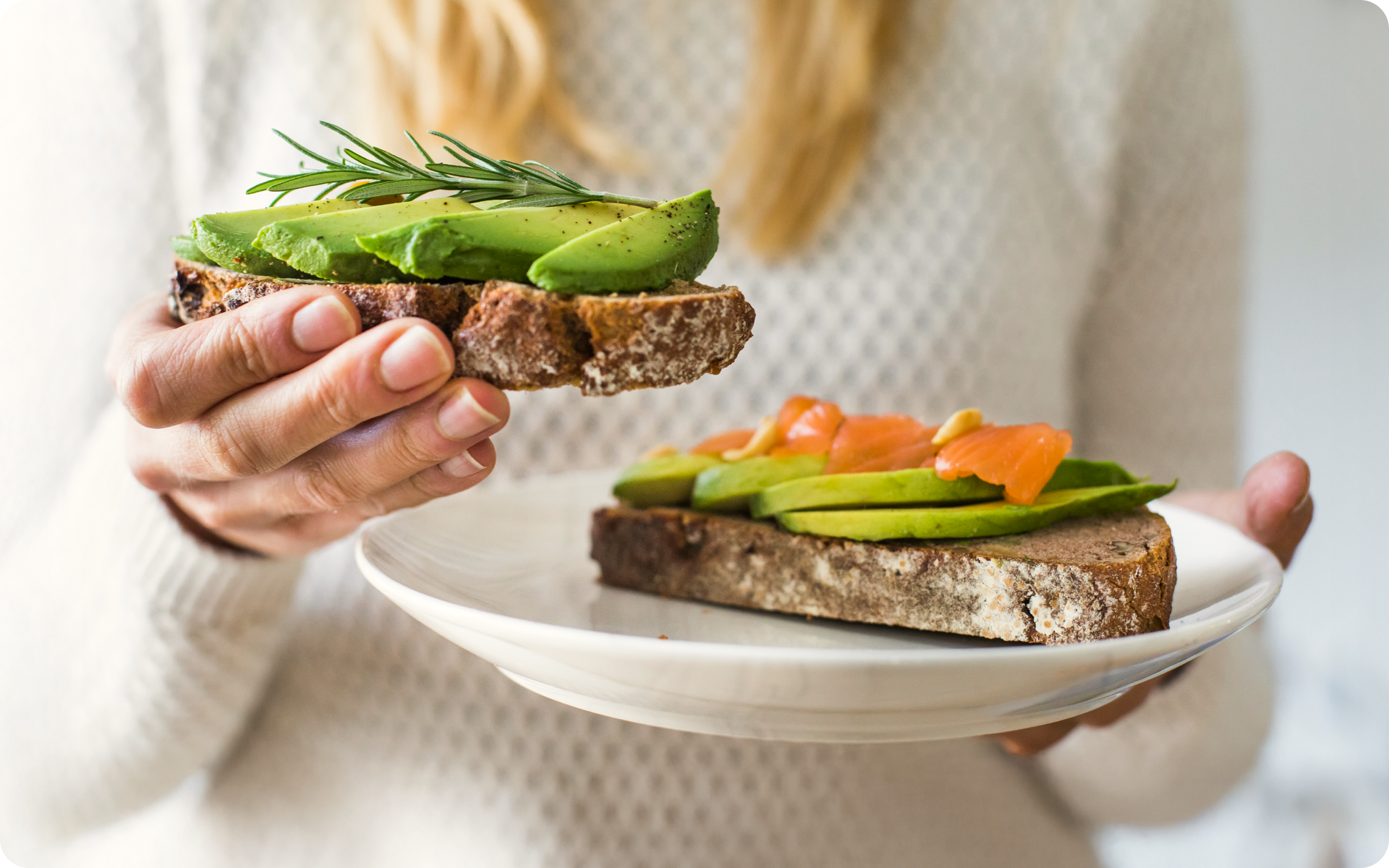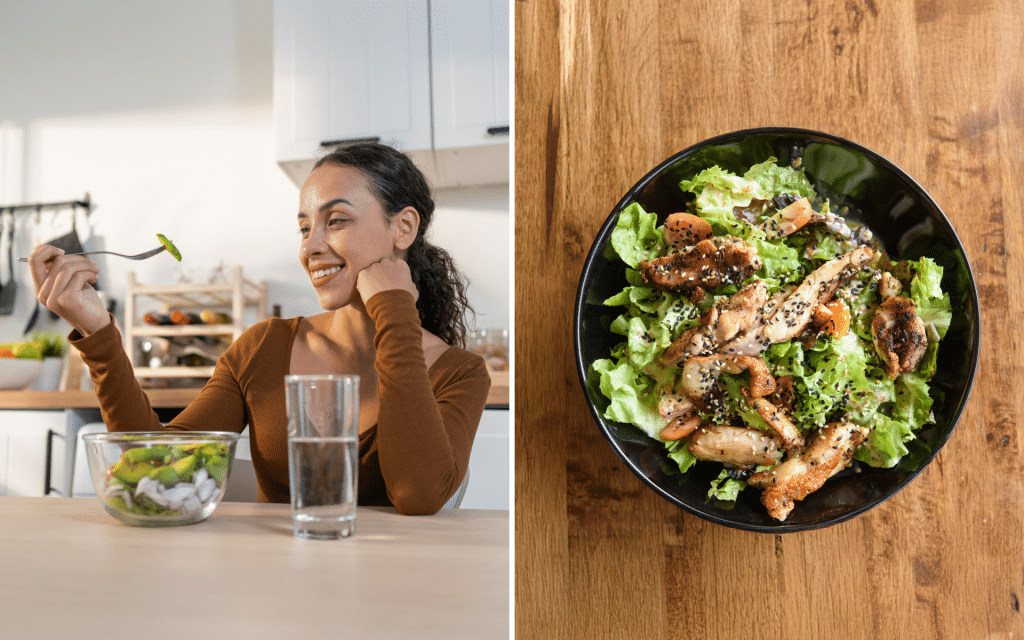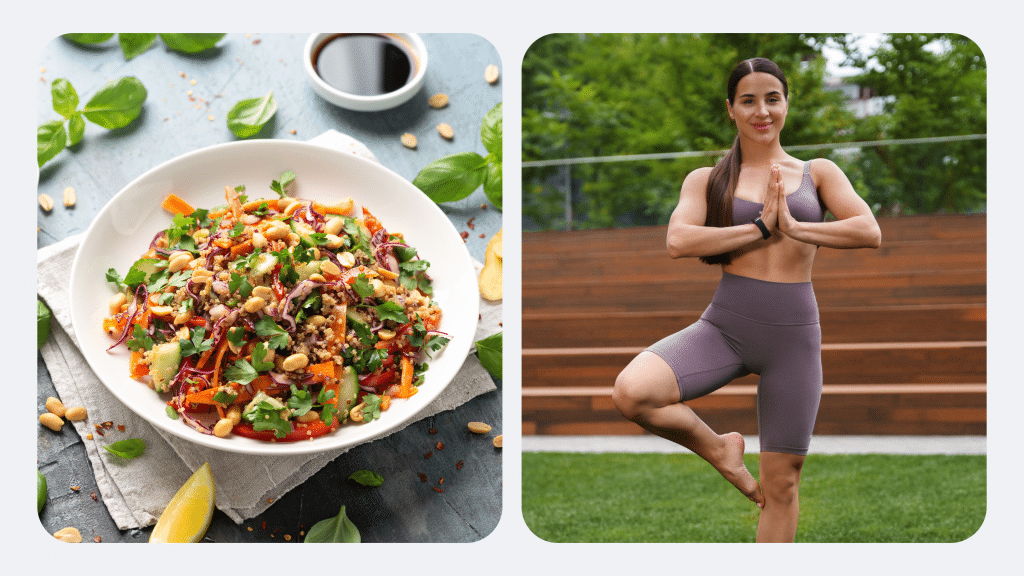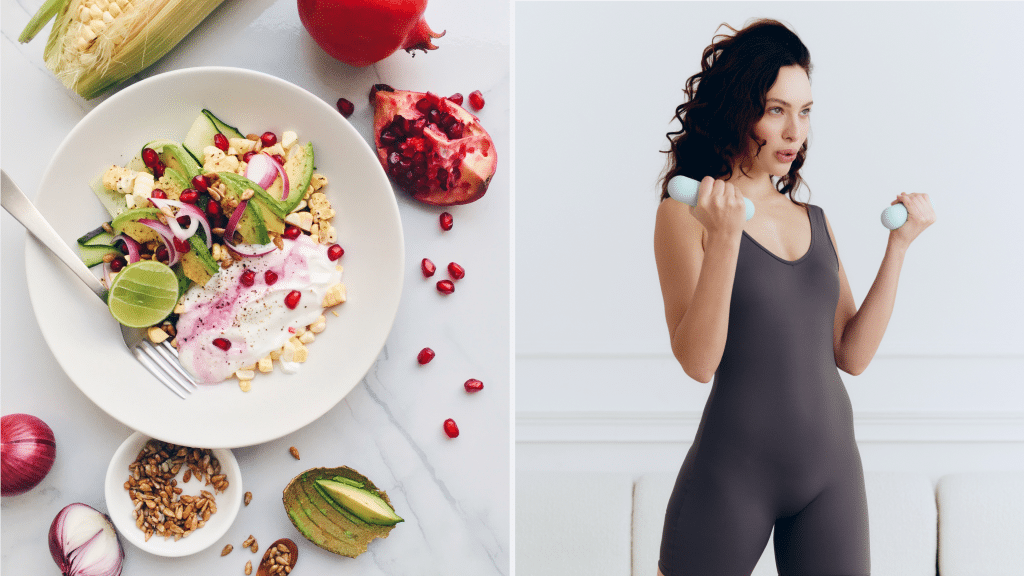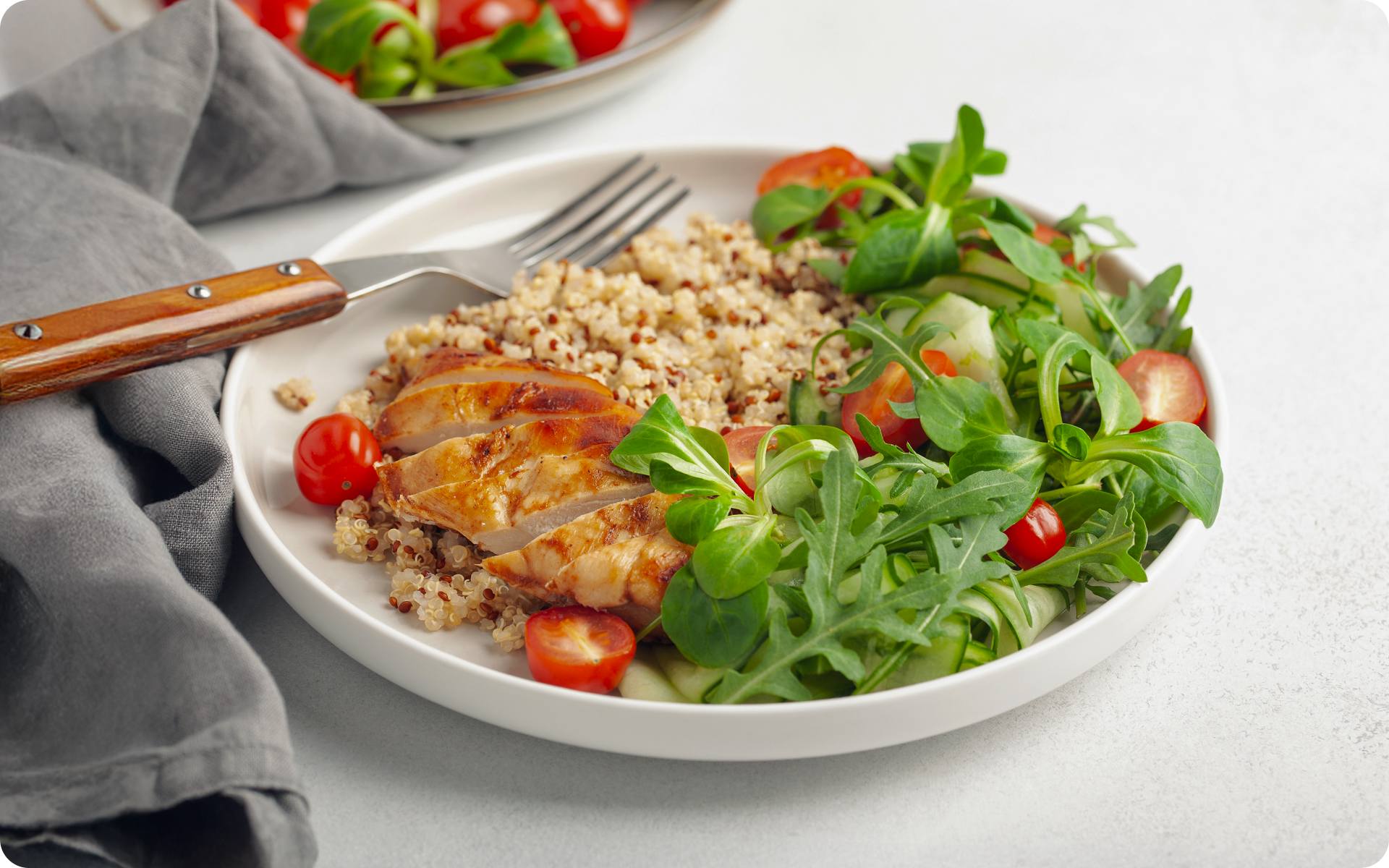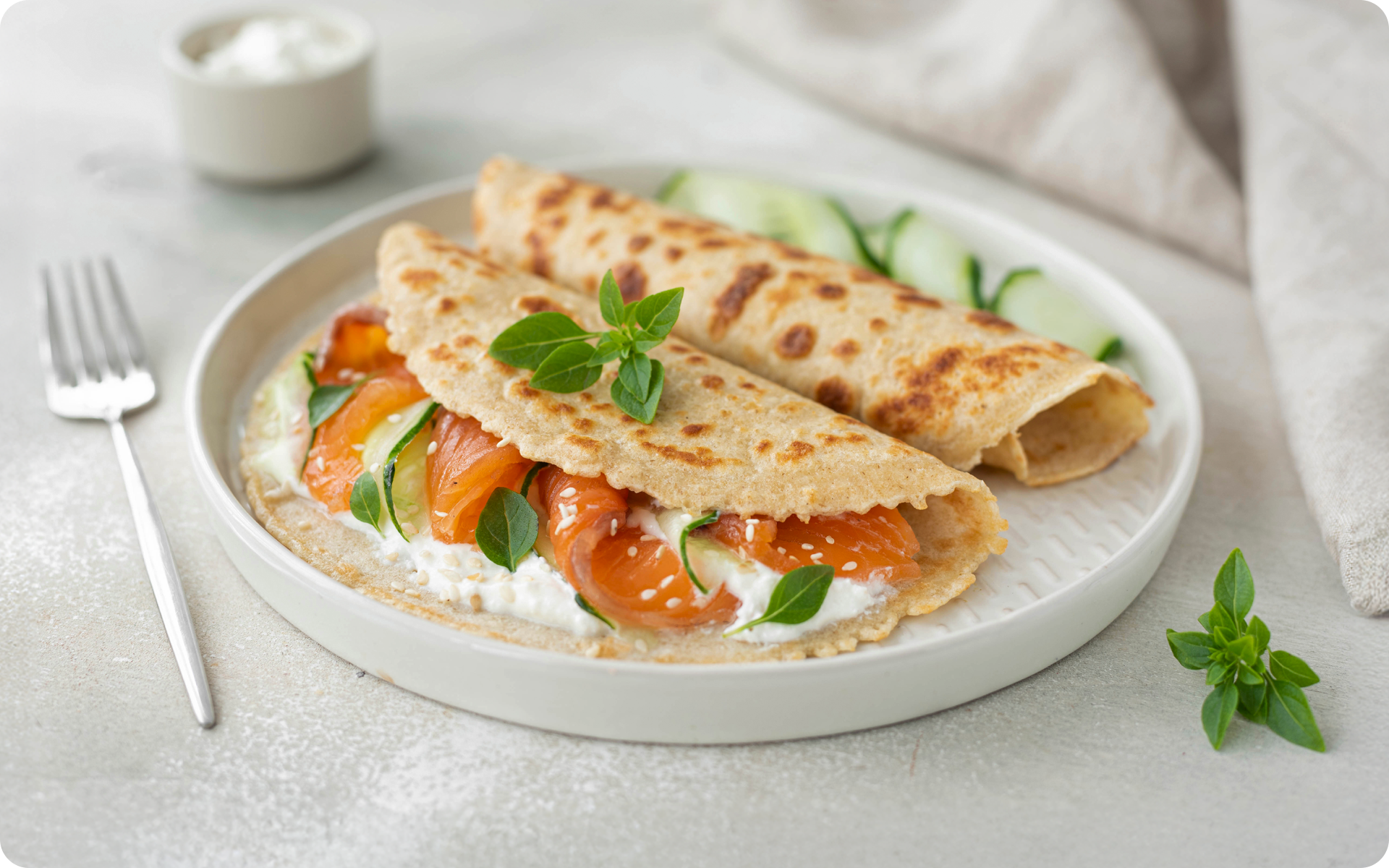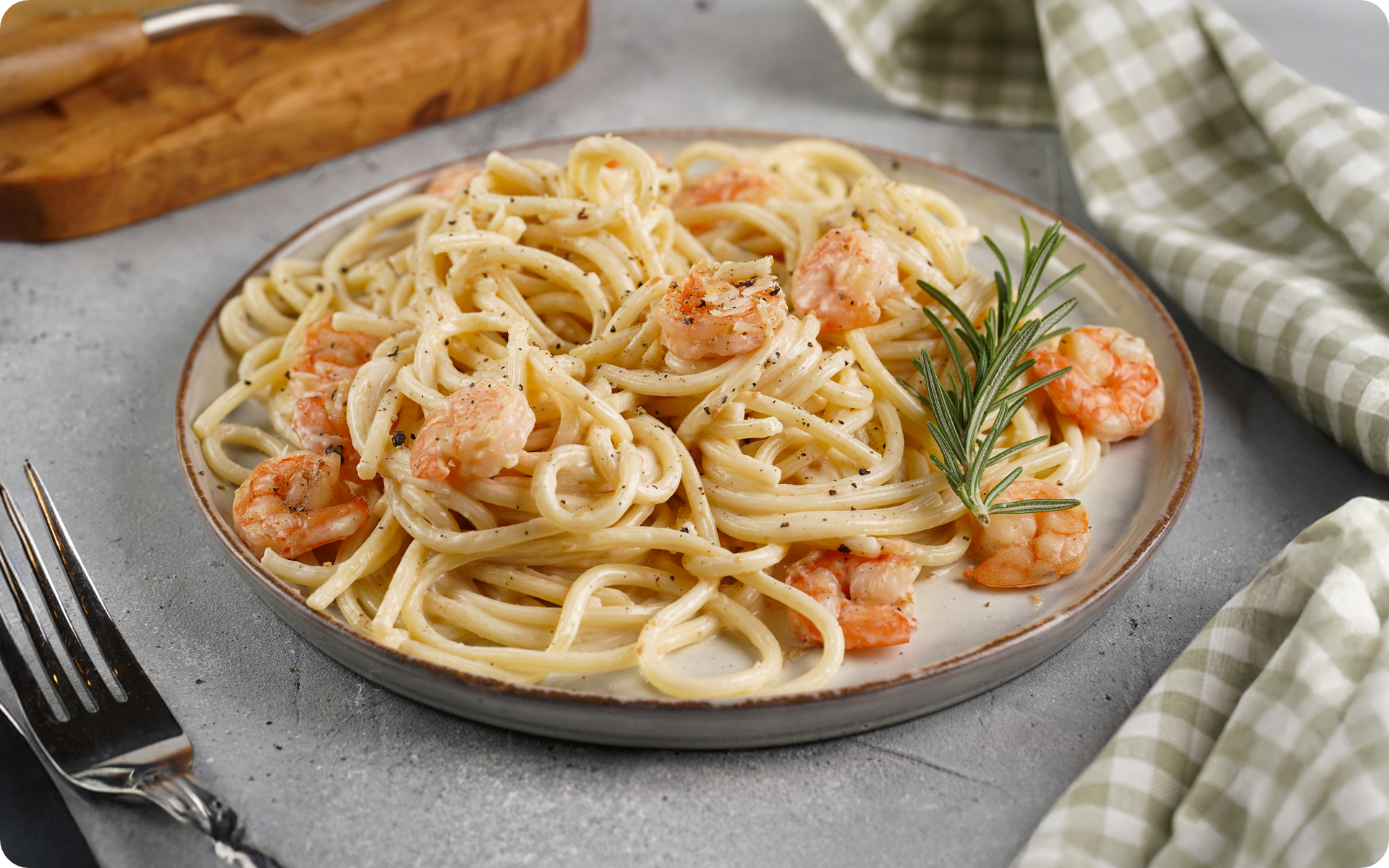A common assumption about a high-protein diet is that it’s never egg- or dairy-free. That’s the reason why some people don’t even try to enrich their diets with proteins. Today, we’d like to pop this bubble and tell you that it’s quite easy to enrich your meals with proteins while removing eggs and dairy products from them (1).
In this article, we’ll focus on making a high-protein breakfast without eggs or dairy, and it will be vegetarian. When you focus more on vegetables and carefully include protein-rich items in your breakfast, you can give your days a refreshing start!
What Is a Healthy High-protein Breakfast Without Eggs or Dairy?
A prerequisite for making a healthy high-protein breakfast without eggs or dairy is to be thoughtful when shopping for groceries. You’ll want to look for a variety of plant-based protein-rich foods that you may not have thought of before. Check out the meal options below to give you a better idea of how to get started with high-protein breakfast meal prep.
Tofu Scramble
- Crumbled tofu sautéed with turmeric, black salt (for an eggy flavor), spinach, mushrooms, and bell peppers.
- Serve with whole-grain toast or avocado.
Protein: ~15-20g per serving
Chia Seed Pudding with Plant-Based Protein Powder
- Mix chia seeds with almond milk or coconut milk, add a scoop of plant-based protein powder, and let it set overnight.
- Top with nuts, seeds, and berries.
Protein: ~15-20g per serving
Quinoa Breakfast Bowl
- Cooked quinoa mixed with almond butter, flaxseeds, nuts, and plant-based milk.
- Add cinnamon and fruit for flavor.
Protein: ~12-15g per serving
Vegan Protein Smoothie
- Blend pea or hemp protein powder with almond or soy milk, banana, spinach, and nut butter.
- Add chia or flaxseeds for extra nutrition.
Protein: ~20-25g per serving
Lentil or Chickpea Pancakes (Besan Chilla)
- Made with chickpea flour, water, and spices.
- Serve with hummus or avocado.
Protein: ~10-12g per serving
Overnight Oats with Nuts and Seeds
- Rolled oats soaked in plant milk with hemp seeds, chia seeds, peanut butter, and a scoop of protein powder.
Protein: ~15-20g per serving
Tempeh and Avocado Toast
- Grilled tempeh on whole-grain toast with mashed avocado.
Protein: ~15-18g per serving
These are a bunch of breakfast options to give you an idea of how your morning table may look. For more information on how to eat a protein-rich breakfast without eggs or dairy, scroll to the next section.
Read more: 10 High-Protein Breakfast Ideas Without Eggs
How to Eat High-Protein Without Eggs or Dairy
You can eat a high-protein plant-based diet without eggs or dairy by choosing plant-based or alternative protein sources. Options you can add to your diet include:
- Legumes (lentils, chickpeas, black beans)
- Soy-based foods (tofu, tempeh, edamame)
- Grains (quinoa, whole grains)
- Nuts and seeds (almonds, chia seeds, hemp seeds)
- Plant-based protein powders (pea, hemp, or rice protein)
Research has shown that plant-based proteins can support health and muscle mass just as well as animal proteins. A review in The American Journal of Clinical Nutrition (2017) concluded that eating enough plant proteins can provide all the essential amino acids needed for good health (2). The key is to eat a variety of plant-based protein-rich foods.
The BetterMe: Health Coaching app will provide you with a host of fat-frying fitness routines that’ll scare the extra pounds away and turn your body into a masterpiece! Get your life moving in the right direction with BetterMe!
What Can I Eat for Breakfast if I Can’t Have Dairy or Eggs?
If you can’t have eggs or dairy for health reasons, there are several options you can still go for. Here are some plant-based breakfast ideas you could go for:
High-Protein Options
- Tofu Scramble: Crumbled tofu sautéed with turmeric, spinach, and bell peppers.
- Chickpea Pancakes (Besan Chilla): Made with chickpea flour, water, and spices.
- Quinoa Breakfast Bowl: Cooked quinoa with almond butter, nuts, and berries.
- Vegan Protein Smoothie: Blend plant-based protein powder with banana, almond milk, and peanut butter.
Fiber-Rich and Energizing Choices
- Overnight Oats: Oats soaked in almond or coconut milk with chia seeds and fruits.
- Chia Seed Pudding: Chia seeds soaked in plant milk, and topped with nuts and berries.
- Avocado Toast with Seeds: Whole-grain toast topped with mashed avocado and hemp or chia seeds.
Quick and Easy Options
- Nut Butter and Banana on Whole-Grain Toast: A filling, protein-rich choice.
- Dairy-Free Granola with Plant-Based Yogurt: A crunchy, nutritious option.
- Homemade Energy Bars: Made with nuts, seeds, and dates for a natural protein boost.
A diet that follows this pattern can bring several health benefits. For example, a diet that doesn’t have dairy can help prevent bloating and digestive issues, particularly for those with a lactose intolerance. Research published in the Journal of Student Research also suggests that eating a variety of plant proteins (such as lentils, tofu, and quinoa) can overcome any differences in bioavailability and amino acid profiles between animal- and plant-based proteins (3).
Therefore, you won’t feel like you’re missing out on important nutrients if you consume a diet that is free of milk or eggs. You can nourish your body with the right macros if you plan well.
How to Add Plant-Based Protein to Breakfast
Adding plant-based protein to breakfast is simple and easy. And the best part is that it keeps you full and energized throughout the day. Some simple ways to boost protein in your morning meals include:
- Use Protein-Rich Grains
Quinoa can be a great alternative to oats. It contains all nine essential amino acids, which makes it a complete protein pack (3). At the same time, whole-grain or sprouted bread has more protein than white bread (4). It can pair well with avocado or nut butter to make it rich with proteins. Including grains such as amaranth or buckwheat in your breakfast can also help increase your protein intake.
- Choose Legumes and Soy-based Foods
Tofu scramble is a great alternative to scrambled eggs. It has a similar texture and is packed with protein. Chickpea flour pancakes (Besan Chilla) are a tasty, gluten-free breakfast that’s also rich in plant-based protein. You can also add cooked lentils to your breakfast bowls or wraps to make them more filling and nutritious.
BetterMe will shake off your mental funk, rid you of your energy-zapping habits, and help you sculpt the body of your dreams. Intrigued? Hurry up and change your life for the better!
- Include Nuts and Seeds
Chia and hemp seeds are packed with protein and make a great topping for oatmeal, smoothies, or dairy-free yogurt. Nut butters such as almond, peanut, or cashew add both protein and healthy fats when spread on toast or mixed into oatmeal. You can also stir ground flaxseeds into smoothies, plant-based milk, or pancake batter for an easy protein boost.
- Choose Dairy-free Yogurt Alternatives
Soy or almond yogurt is a great plant-based alternative to regular yogurt and is packed with protein. Adding nuts, seeds, and granola makes it crunchier and even more nutritious. Opt for the unsweetened kind to keep your breakfast healthy and free from extra sugar.
Starting your day strong sets the tone for your whole day, giving you the energy and all the positivity you need to keep going. By combining different plant-based breakfast ideas here, you can make a nutritious meal. However, we understand that it asks for adequate planning and shopping mindfully but you can get the hang of it if you have the will to get started.
Take the first step, try out the options for a few weeks, and you can find your energy reaching a whole new level.
How to Make a Protein Smoothie Without Dairy or Eggs
You need to get your hands on your favorite plant-based ingredients when you plan to make a protein smoothie. It all depends on your taste and the seasonal fruits or vegetables that are easily accessible. The U.S. Department of Agriculture (USDA) suggests eating 25 to 38 grams of fiber daily, but most Americans only consume around 16 grams per day. However, protein smoothies enriched with plants are a great way to fill your body with the required fiber.
Check out some crowd-favorite recipes below:
Classic Peanut Butter Banana Smoothie
- Almond milk (or soy milk for extra protein)
- 1 frozen banana
- 1 scoop pea or hemp protein powder
- 1 tablespoon peanut butter
- ½ teaspoon cinnamon
- Ice cubes
Chocolate Almond Power Smoothie
- Unsweetened almond milk
- 1 scoop chocolate plant-based protein powder
- 1 tablespoon almond butter
- ½ avocado (for creaminess)
- 1 teaspoon cacao powder
- ½ frozen banana
Berry Blast Protein Smoothie
- Oat milk or coconut water
- 1 scoop vanilla plant-based protein powder
- ½ cup frozen mixed berries (strawberries, blueberries, raspberries)
- 1 tablespoon flaxseeds
- 1 teaspoon maple syrup (optional)
Green Protein Power Smoothie
- Soy milk (high in protein)
- 1 scoop plant-based protein powder
- 1 cup spinach or kale
- ½ avocado
- 1 tablespoon chia seeds
- ½ green apple for sweetness
As you can see, these smoothies are high in protein and you can easily make them a part of your breakfast without milk or eggs, or you can consume them as a post-workout snack if you crave something sweet after the usual exercise regime.
What Are Some Savory Breakfast Options Without Eggs or Dairy?
Some days, you might yearn for a savory breakfast without eggs. Not because you’re allergic but because you want to munch on something that satisfies your savory cravings and doesn’t taste like eggs or dairy!
If you’re bored of eggs and dairy in your breakfast, you should try the following breakfast combos:
- Avocado Toast with Protein Toppings: Mashed avocado on whole-grain toast and top it with hemp seeds, pumpkin seeds, or sautéed mushrooms for added protein and texture.
- Vegan Breakfast Burrito: A whole-wheat tortilla filled with black beans, sautéed peppers, onions, and tofu scramble makes a satisfying, high-protein breakfast. Add salsa or guacamole for extra flavor.
- Hummus and Veggie Toast: Spread hummus on whole-grain toast and top it with sliced cucumbers, cherry tomatoes, and a sprinkle of sesame seeds or smoked paprika.
- Savory Quinoa Bowl: Cooked quinoa mixed with sautéed kale, cherry tomatoes, chickpeas, and tahini dressing makes a hearty breakfast that’s packed with plant-based protein.
- Breakfast Sweet Potato Hash: Diced sweet potatoes sautéed with black beans, onions, and bell peppers make a filling, fiber-rich breakfast. Sprinkle with nutritional yeast for a cheesy flavor without dairy.
- Vegan Miso Soup with Tofu: A warm, umami-rich miso soup with tofu cubes, seaweed, and green onions is a comforting and protein-rich way to start the day.
These savory meals will keep you energetic through the day as they’re quite filling. You can even have a smoothie on the go after your breakfast to make it a full, nourishing meal!
Read more: How to Build a Healthy Dinner Plate, According to Experts
Can Whole Grains Boost the Protein in Breakfast?
Yes, whole grains can boost proteins in a diet as they have at least a few grams of proteins per serving. They’re even considered a necessary ingredient when someone is trying to make a high-protein breakfast without eggs or dairy for weight loss as they provide sustained energy and fiber. Check out more information on the topic “Are Overnight Oats Healthy?” to learn delicious ways to add oats to your breakfast.
The Bottom Line
A healthy breakfast consumed peacefully can fuel your body for the entire day. Later, you can have a smoothie or a quick fruit or vegetable snack at noon to nourish yourself. We rounded up loads of options you can eat if you want to make a high-protein breakfast without eggs or dairy. You can pick the easiest and most favorite options from this guide or research online to find recipes that contain easily accessible food items in your location. Ultimately, it’s all about satisfying your belly at the start of the day so you get all the positive vibes!
DISCLAIMER:
This article is intended for general informational purposes only and does not serve to address individual circumstances. It is not a substitute for professional advice or help and should not be relied on for making any kind of decision-making. Any action taken as a direct or indirect result of the information in this article is entirely at your own risk and is your sole responsibility.
BetterMe, its content staff, and its medical advisors accept no responsibility for inaccuracies, errors, misstatements, inconsistencies, or omissions and specifically disclaim any liability, loss or risk, personal, professional or otherwise, which may be incurred as a consequence, directly or indirectly, of the use and/or application of any content.
You should always seek the advice of your physician or other qualified health provider with any questions you may have regarding a medical condition or your specific situation. Never disregard professional medical advice or delay seeking it because of BetterMe content. If you suspect or think you may have a medical emergency, call your doctor.
SOURCES:
- Mixing milk, egg and plant resources to obtain safe and tasty foods with environmental and health benefits (2021, researchgate.net)
- Animal Protein versus Plant Protein in Supporting Lean Mass and Muscle Strength: A Systematic Review and Meta-Analysis of Randomized Controlled Trials (2021, pmc.ncbi.nlm.nih.gov)
- Is Plant Protein Equally As Effective At Promoting Lean Muscle Mass Compared To Meat? (2023, researchgate.net)
- Seed Composition and Amino Acid Profiles for Quinoa Grown in Washington State (2020, pmc.ncbi.nlm.nih.gov)
